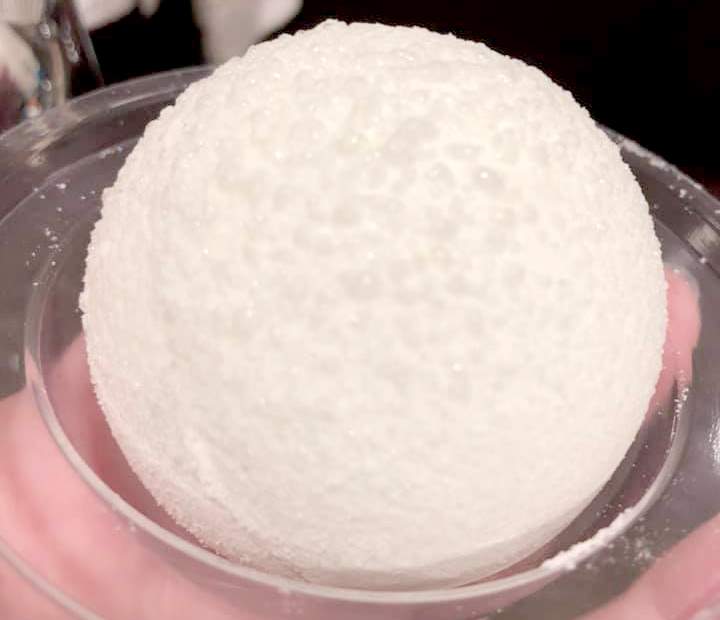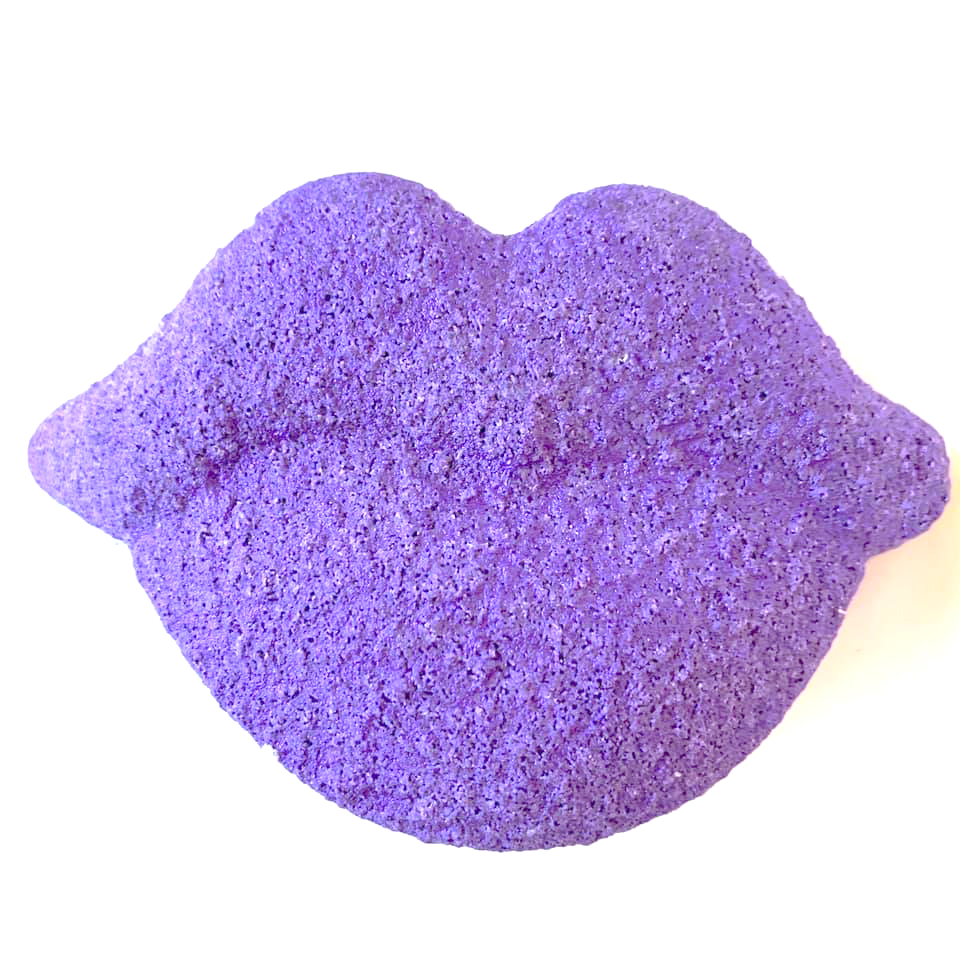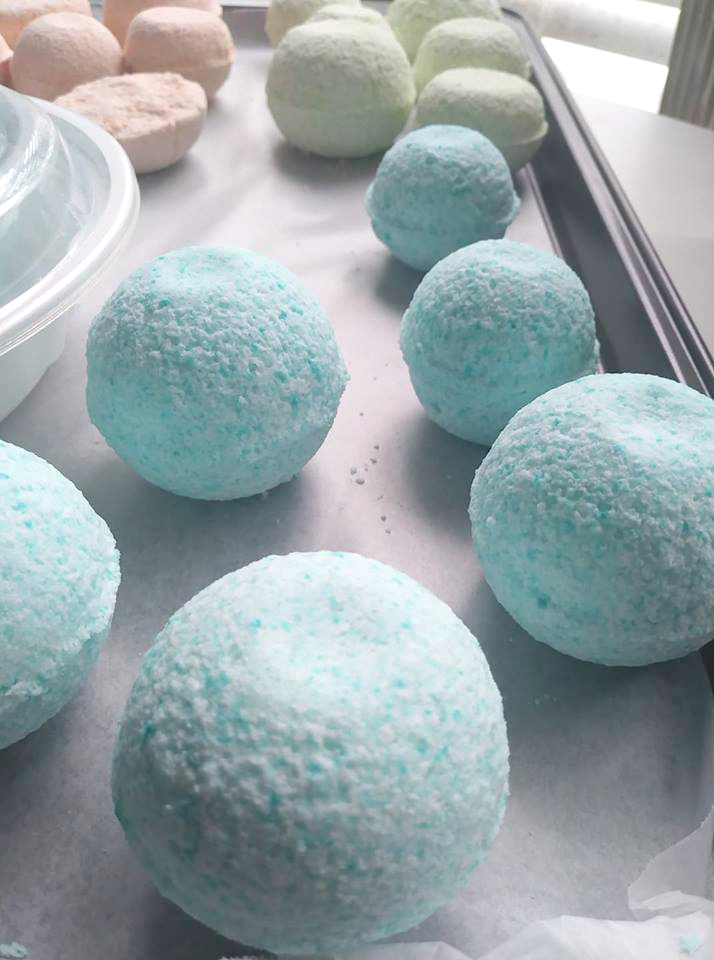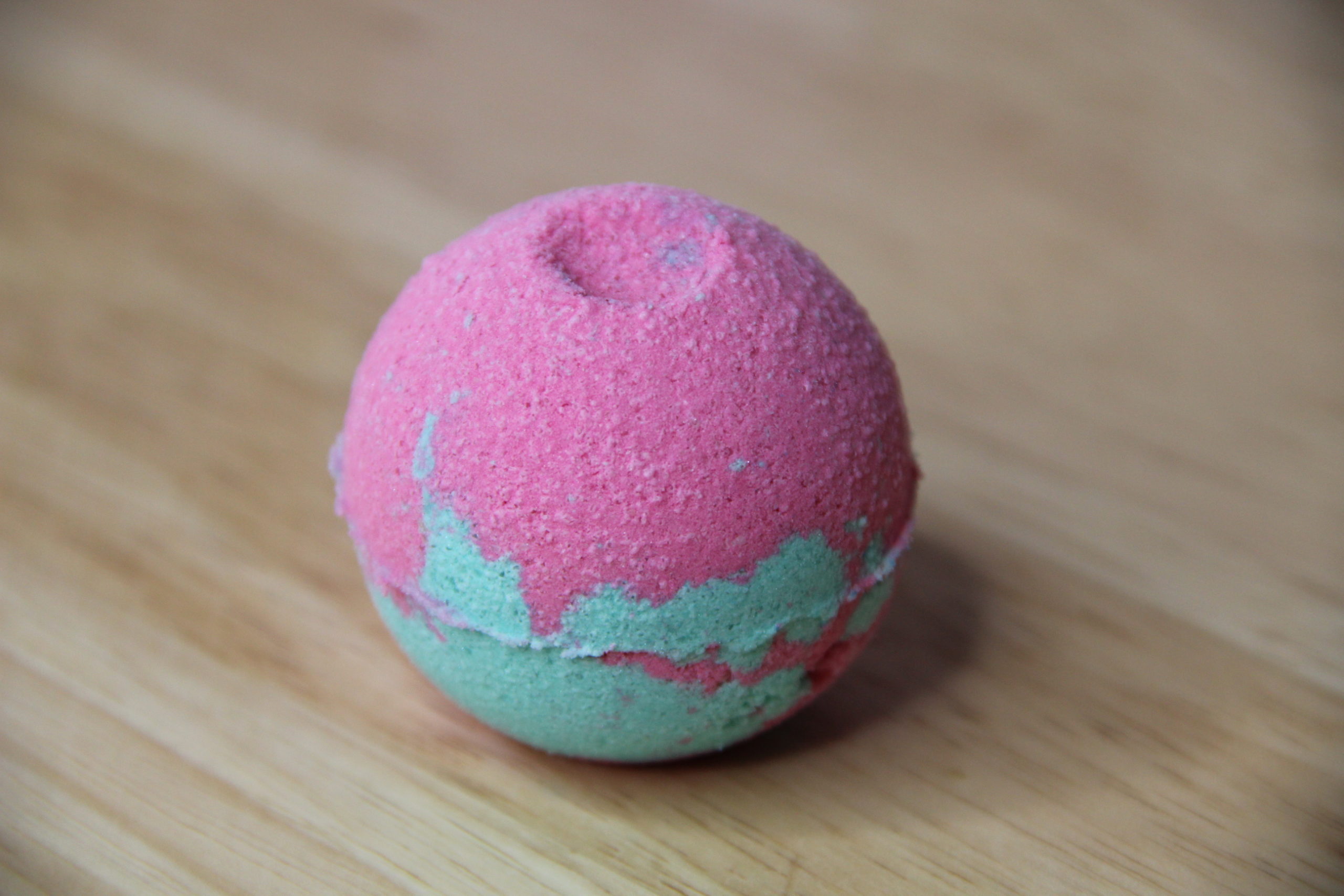Making bath bombs in humid conditions can have you pulling your hair out in no time. There is nothing worse than creating a beautiful bath bomb, only to come back to it later to see that it has warts or surface activation.
So what can you do? Here are a few tips.
Say goodbye to the salt.
If you’re using salt in your recipe, take it out. Salt is hygroscopic, meaning it absorbs atmospheric water (humidity). When working with salt in your formula, you might create the perfect bomb only to come back to it 10 minutes later to find it dotted with moisture and with an activated surface. This is the atmospheric water that the salt attracted, activating the baking soda and citric acid combination.
Add hardeners.
The base of any good bath bomb is a combination of baking soda and citric acid. To this you can add hardeners and fillers. Two really great hardeners are cream of tarter and kaolin clay. They make a bomb that firms up quickly so that it doesn’t have time to react as it dries. Kaolin clay also draws in the water so it doesn’t cause the bomb to react.
Use alcohol in your binder.
Alcohol is a great binder to use if it is humid where you live. It evaporates quickly leaving behind a hard bomb that you can package. You might have to try using different strengths of alcohol. I’ve found that using a 50/50 blend of alcohol and water (or simply 50% alcohol) helps to create a super-hard bomb that dries quickly. If you use 91% alcohol only, with no water, your bombs might come out powdery because the alcohol didn’t wet the mixture enough to create a hard bomb. You can also try a blend of alcohol and witch hazel.
Get a dehumidifier.
If your work area is humid, you might need to invest in a dehumidifier. You can run the dehumidifier in your work space or run it in a small closet and set your bombs in there to dry.
I put out a call for warty bomb pics in our group, Bath Fizz and Foam! So many great pictures were submitted!

by Jennifer Kieffer Rojas 
by Robyn French Smith 
by Karyn Haney
Package quickly.
If your bombs make it to the point of drying and are ready to package, go ahead and package in airtight packaging. If you let your bombs sit out, they’ll just eventually pull in moisture from the air. Go ahead and shrink wrap or, at least, store in an airtight container until you can individually package.
Need a recipe? Give our Basic Bath Bomb Recipe a try! It includes hardeners and is salt-free.
Do you successfully make bath bombs in a high humidity area? We’d love to hear your tips and tricks! Please leave a comment!


I live in rainy Seattle, so I learned quickly when starting this craft how finicky the mix can be. I absolutely agree NO SALTS, and honestly, don’t mix in any organic inclusions either (like dried flowers, keep that to the outside). I prefer using cream of tartar as a hardener and have found heavier oil bases (avocado, shea, and coconut) give me more consistent results than almond oil, for example. Mica colorants give a less saturated color, but they also seem to be more reliable in not bubbling than liquid colorants.
Hi Lauren!
I’m down in Tacoma and have a cracking issue. Would you mind sharing your recipe, please? Thanks!
Christine
I know this was a year ago you asked this but
mix mix mix.
have you got a stand mixer with a flat paddle?
i mix
30% citric acid
50% bicarb
4% emulsifying wax (yes one you heat like CA/C20 works well)
6% oil
2% fragrance
8% slsa (can replace with cream of tartar or with bicarb 4% + 4% citric)
mica – usually add 0.02% does make it go to 100.02% but it won’t affect the overall formula.
heat oil and emulsifing wax in double boiler when dissolved add to dry ingredients
then I add all ingredients (EXCEPT CITRIC) into stand mixer and mix for about 10 minutes.
then I add citric and mix for another 5-10 minutes.
I don’t have any issues whatsoever. don’t buy a high humidity formula – they are a waste of money.
I originally started with the 2:1 ratio and info the book
Make It Fizz
but I’ve found out the hard way that bath bomb formulas need to be worked.
I wrote extensive notes on every formula I tried. I don’t shrink wrap. Once dry. I store in Tupperware.
never had an issue since I started doing my own and stopped doing what the internet told me.
I don’t use water whatsoever and have no need for i-PrOH
i feel a lot of the formulas out there are not actually formulas.
as a trainee cosmetic chemist (nearly finished – only another 8 months to go) I don’t use volume – it’s not accurate and I feel why a lot of people have issues with bath bombs.
I make shower bombs too (not shower steamers – that sit in the bottom of the shower and do the same thing a difuser does).
I live in the tropics.
Hi i tried your recipe and it was quite dry and i had to add extra oil and Polysorbate 80. It dissolve very slow in water as well.
Please hive us the receipt. We are struggling
First attempt maki g bath bombs as a newbie in super humid Hong Kong. Humidity was over 80% and I have ended up with a mess. Going to try your tips. Thanks .